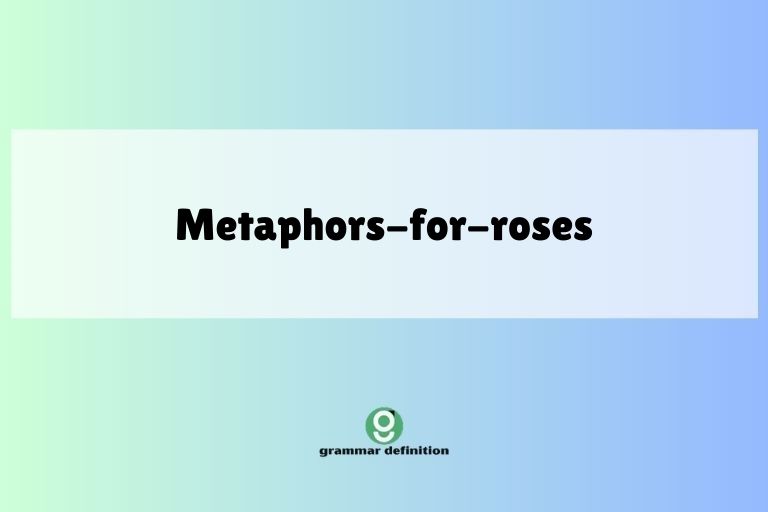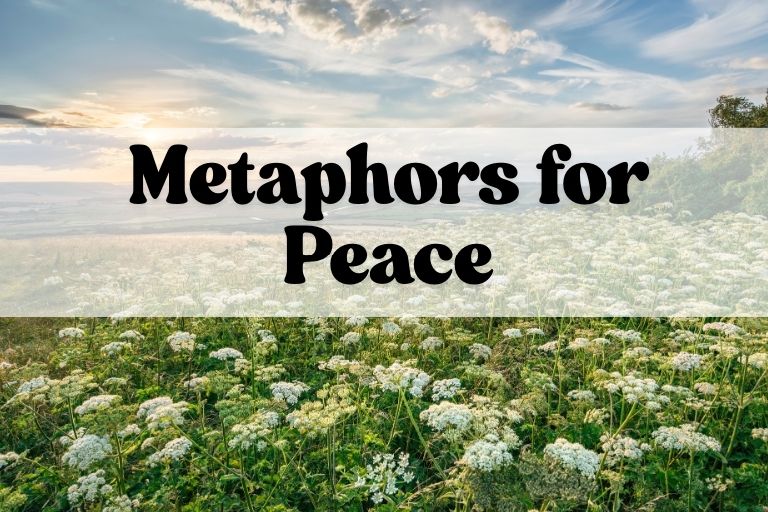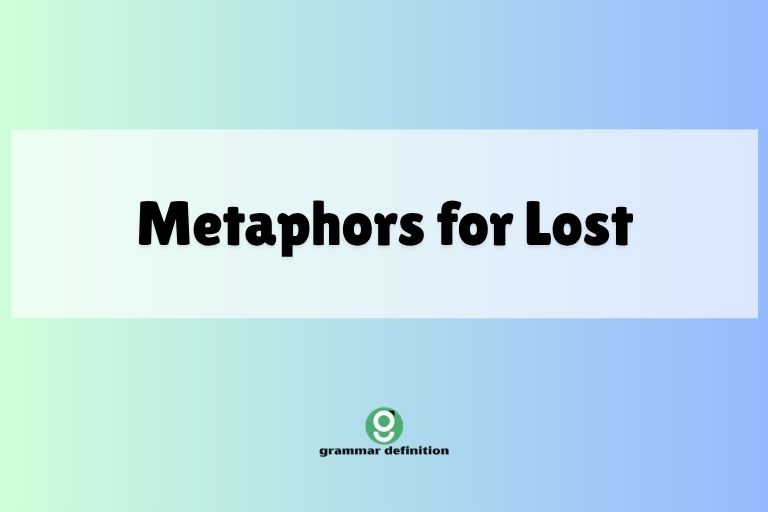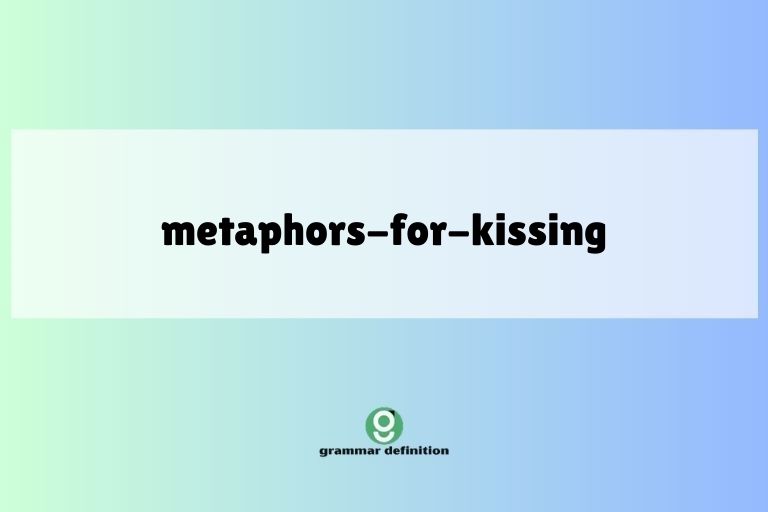Blooming Language: Mastering Metaphors for Roses

Metaphors are the lifeblood of poetic expression and vivid communication. Understanding how to craft and interpret metaphors, especially those centered around universally recognized symbols like roses, is crucial for mastering the nuances of the English language.
This article will delve into the art of using metaphors for roses, exploring their structure, types, and applications. Whether you’re a student, a writer, or simply someone who appreciates the beauty of language, this guide will equip you with the knowledge to use rose metaphors with confidence and creativity.
Roses, with their rich history and diverse symbolism, offer a fertile ground for metaphorical exploration. From representing love and beauty to signifying loss and fragility, the rose provides endless possibilities for enriching your writing and enhancing your understanding of figurative language.
Join us as we uncover the secrets of crafting compelling and evocative metaphors that capture the essence of the rose.
Table of Contents
- Introduction
- Definition of Metaphor
- Classification of Metaphors
- Function of Metaphors
- Contexts for Using Metaphors
- Structural Breakdown of Rose Metaphors
- Tenor and Vehicle
- The Ground of the Metaphor
- Types and Categories of Rose Metaphors
- Love and Romance Metaphors
- Beauty and Elegance Metaphors
- Fragility and Transience Metaphors
- Pain and Loss Metaphors
- Secrecy and Mystery Metaphors
- Growth and Potential Metaphors
- Examples of Rose Metaphors
- Love and Romance Examples
- Beauty and Elegance Examples
- Fragility and Transience Examples
- Pain and Loss Examples
- Secrecy and Mystery Examples
- Usage Rules for Rose Metaphors
- Appropriateness and Context
- Originality and Creativity
- Clarity and Understanding
- Avoiding Overuse
- Common Mistakes with Rose Metaphors
- Mixed Metaphors
- Clichés and Overused Metaphors
- Misunderstanding the Symbolism
- Practice Exercises
- Exercise 1: Identifying Rose Metaphors
- Exercise 2: Creating Rose Metaphors
- Exercise 3: Analyzing Rose Metaphors
- Advanced Topics in Rose Metaphors
- Extended Metaphors
- Conceits
- Historical and Cultural Context
- Frequently Asked Questions
- Conclusion
Definition of Metaphor
A metaphor is a figure of speech that directly compares two unlike things without using “like” or “as.” It asserts that one thing is another, creating a connection between them based on shared qualities or characteristics. Metaphors are essential tools in writing and communication, allowing us to express abstract ideas, evoke emotions, and create vivid imagery. Understanding metaphors unlocks deeper layers of meaning in both literature and everyday conversation.
Classification of Metaphors
Metaphors can be classified in several ways, including:
- Standard Metaphors: Explicitly state the comparison (e.g., “He is a lion”).
- Implied Metaphors: Suggest the comparison without directly stating it (e.g., “He roared his disapproval,” implying he is like a lion).
- Dead Metaphors: Metaphors that have become so common they are no longer recognized as figurative (e.g., “the leg of a table”).
- Mixed Metaphors: Combine two or more inconsistent metaphors, often creating a humorous or nonsensical effect (e.g., “We’ll burn that bridge when we get to it”).
Function of Metaphors
Metaphors serve several important functions in language:
- Clarification: Explaining complex ideas by relating them to something familiar.
- Emphasis: Highlighting specific qualities or characteristics.
- Emotional Impact: Evoking feelings and creating a connection with the audience.
- Aesthetic Appeal: Adding beauty and creativity to writing.
- Conciseness: Conveying a lot of information in a few words.
Contexts for Using Metaphors
Metaphors are used in a wide range of contexts, including:
- Literature: Poetry, novels, plays, and short stories.
- Speeches: Political addresses, motivational speeches, and presentations.
- Everyday Conversation: Describing experiences, expressing opinions, and making jokes.
- Advertising: Creating memorable slogans and associating products with desirable qualities.
- Journalism: Adding color and depth to news reports and feature articles.
Structural Breakdown of Rose Metaphors
Understanding the structure of a metaphor helps in analyzing and creating effective comparisons. The two key elements are the tenor and the vehicle, connected by the ground.
Tenor and Vehicle
The tenor is the subject being described, while the vehicle is the object or concept used to describe it. In a rose metaphor, the rose itself is often the vehicle, used to describe something else (the tenor). For example, in the metaphor “Her lips were a rosebud,” “lips” is the tenor, and “rosebud” is the vehicle.
The Ground of the Metaphor
The ground is the shared characteristic or association between the tenor and the vehicle. It’s the reason why the comparison makes sense. In the example above, the ground might be the redness, softness, or delicate beauty shared by both lips and a rosebud. The ground is the conceptual bridge that allows the reader to understand the connection.
Types and Categories of Rose Metaphors
Rose metaphors can be broadly categorized based on the aspects of the rose they highlight and the concepts they are used to represent.
Love and Romance Metaphors
Roses are commonly associated with love and romance. Metaphors in this category often use the rose to symbolize passion, affection, and romantic relationships.
Think of phrases like “a bed of roses” representing a comfortable, loving situation, or a single rose representing a token of affection.
Beauty and Elegance Metaphors
The rose’s exquisite form and vibrant colors make it a natural symbol of beauty and elegance. These metaphors often describe people, objects, or experiences as being rose-like in their loveliness and grace.
For example, describing someone as having a “rose-like complexion” emphasizes their radiant beauty.
Fragility and Transience Metaphors
The delicate petals and relatively short lifespan of a rose can symbolize fragility and the fleeting nature of beauty and life. These metaphors often convey a sense of vulnerability and the ephemeral quality of existence.
A common example might be comparing a fleeting moment of happiness to the “brief bloom of a rose.”
Pain and Loss Metaphors
The thorns of a rose can represent pain, suffering, and the darker aspects of love and life. These metaphors often explore the bittersweet nature of experiences and the potential for hurt within beauty.
The phrase “every rose has its thorn” is a classic example, highlighting the inherent pain that can accompany beauty and pleasure.
Secrecy and Mystery Metaphors
Historically, roses have also been associated with secrecy and mystery. The phrase “sub rosa” (under the rose) means “in secret” or “confidential.” These metaphors often evoke a sense of hidden knowledge, veiled intentions, and the unknown.
Comparing a person’s secrets to a “hidden rose garden” suggests a beautiful but concealed inner world.
Growth and Potential Metaphors
The rosebud, representing a rose in its early stages, can symbolize growth, potential, and new beginnings. These metaphors often convey a sense of hope and the promise of future beauty.
Describing a young artist as a “budding rose” suggests they have the potential to blossom into something extraordinary.
Examples of Rose Metaphors
Here are numerous examples of rose metaphors, categorized for clarity. Each example illustrates how the rose’s various qualities can be used to create meaningful comparisons.
Love and Romance Examples
The following table provides examples of rose metaphors used to describe love and romance. Notice how the rose’s beauty, fragrance, and association with love are used to create vivid imagery.
| Metaphor | Explanation |
|---|---|
| Her love was a rose garden, full of beauty and thorns. | Love is compared to a rose garden, suggesting it is beautiful but also has challenges. |
| Their relationship was a bed of roses. | The relationship is described as easy and pleasurable. |
| He offered her a rose, a symbol of his affection. | The rose represents love and care. |
| Her heart was a rose, blooming with love. | The heart is likened to a rose, signifying the growth of love. |
| Their love blossomed like a rose in spring. | Love is described as growing and flourishing like a rose. |
| The first kiss was a rose petal falling on her lips. | The kiss is gentle, soft, and beautiful, like a rose petal. |
| Their anniversary was celebrated with a bouquet of crimson roses, each a year of passionate love. | Crimson roses symbolize deep, passionate love enduring through the years. |
| His proposal was a single, perfect rose in a velvet box. | The rose symbolizes the perfection and sincerity of his love. |
| Her smile was the fragrance of a rose, intoxicating and sweet. | Her smile is alluring and delightful like the scent of a rose. |
| Their love story was written in the petals of a rose, each layer revealing a new chapter. | The love story is complex and unfolds beautifully over time, like the layers of a rose. |
| He nurtured their love like a gardener tending to a rose bush. | Love requires care, attention, and dedication to flourish. |
| She wore a rose in her hair, a symbol of her romantic spirit. | The rose represents her love for romance and beauty. |
| Their love was a thornless rose, a rare and precious gift. | A love without pain or hardship is a unique and valuable experience. |
| The memory of their first dance was a rose pressed in her diary. | The memory is cherished and preserved, like a pressed rose. |
| He whispered sweet nothings, each word like a delicate rose petal. | His words were gentle, beautiful, and romantic. |
| Their love was a climbing rose, growing stronger and higher with each passing year. | Love becomes more resilient and profound over time. |
| The wedding vows were exchanged under an archway of white roses, symbolizing purity and commitment. | White roses represent the purity and sincerity of the vows. |
| Her eyes were the color of tea roses, warm and inviting. | Her eyes are gentle, comforting, and attractive. |
| He sent her a dozen roses, each one a promise of his unwavering devotion. | Each rose represents a deep commitment and faithfulness. |
| Their love was a wild rose, untamed and free. | Their love is natural, unrestricted, and full of life. |
| He found her to be a rose amongst the thorns. | She stood out as a symbol of beauty and love. |
| Love is like a rose, beautiful but often painful. | The beauty of love is often accompanied by pain. |
| She was his rose, the one he cherished above all others. | She was his most valuable and precious love. |
Beauty and Elegance Examples
This table showcases metaphors that use the rose to represent beauty and elegance. The focus is on the rose’s visual appeal and graceful qualities.
| Metaphor | Explanation |
|---|---|
| Her skin was as soft as a rose petal. | Her skin is incredibly smooth and delicate. |
| The sunset painted the sky with the colors of a rose. | The sunset’s colors are beautiful and vibrant, like a rose. |
| The dancer moved with the grace of a rose swaying in the breeze. | The dancer’s movements are elegant and fluid. |
| The queen’s gown was a cascade of rose-colored silk. | The gown is beautiful and luxurious, with a color reminiscent of roses. |
| The cathedral’s stained glass window was a rose in stone. | The window is beautiful and intricate, like a rose. |
| Her voice was the sweet perfume of a rose garden. | Her voice is pleasant, delicate, and captivating. |
| The dew-kissed rose sparkled like a jewel in the morning light. | The rose is radiant and precious, like a jewel. |
| The antique vase was adorned with a delicate rose pattern. | The vase is elegant and refined, featuring a rose design. |
| The melody was as enchanting as the sight of a blooming rose. | The melody is captivating and delightful, like a rose in full bloom. |
| Her laughter was like the gentle rustling of rose petals. | Her laughter is soft, delicate, and pleasing to hear. |
| The artist captured the essence of beauty, painting her portrait like a perfect rose. | The portrait embodies beauty and perfection. |
| The bride’s bouquet was a symphony of white roses, each petal a note of purity. | The bouquet is harmonious and pure, made of white roses. |
| The chandelier sparkled like a thousand crystal roses. | The chandelier is dazzling and beautiful, resembling roses. |
| The garden was a rose-colored dream, filled with fragrance and color. | The garden is enchanting, beautiful, and filled with roses. |
| Her handwriting flowed across the page like the graceful curve of a rose stem. | Her handwriting is elegant and fluid. |
| The sunset cast a rose-tinted glow over the landscape. | The sunset’s light is warm, beautiful, and rose-colored. |
| The architecture of the palace was as intricate and beautiful as a rose in full bloom. | The palace is complex, refined, and visually stunning. |
| She dressed in rose-gold, a color that complemented her radiant complexion. | The color enhances her natural beauty. |
| The jewelry was designed with rose motifs, each piece a testament to timeless elegance. | The jewelry is sophisticated and features rose-inspired designs. |
| The fountain was surrounded by rose bushes, adding to the serene beauty of the scene. | The rose bushes enhance the tranquility and beauty of the fountain. |
| She was a rose amongst the lilies | She was the most beautiful |
| The ballroom was decorated with roses, adding an air of beauty. | The roses helped to enhance the beauty of the room. |
| He described her as a rose because of her beauty. | He thought she was beautiful like a rose. |
Fragility and Transience Examples
These metaphors use the rose to represent fragility and the fleeting nature of life and beauty. They often convey a sense of vulnerability and impermanence.
| Metaphor | Explanation |
|---|---|
| Life is a rose; it blooms beautifully but fades quickly. | Life, like a rose, is beautiful but short-lived. |
| Her health was as delicate as a rose petal in the wind. | Her health is fragile and easily affected. |
| Their happiness was a rose, wilting under the harsh sun of reality. | Their happiness is fragile and easily destroyed by difficult circumstances. |
| Memories are like pressed roses, beautiful but faded. | Memories are cherished but lose their intensity over time. |
| Youth is a rose, blooming briefly before its petals fall. | Youth is beautiful but transient. |
| His dreams were as fragile as a rose covered in frost. | His dreams are vulnerable and easily shattered. |
| Her spirit was as delicate as a glass rose. | Her spirit is fragile and easily broken. |
| The fleeting moment of joy was like the scent of a rose, quickly gone. | The joy was brief and did not last long. |
| Their love was a cut rose, beautiful but destined to wither. | Their love is doomed to fade away. |
| The beauty of the moment was as transient as a rose in full bloom. | The beauty is short-lived and will not last. |
| Her hope was a single rose, struggling to bloom in a barren garden. | Her hope is fragile and faces difficult circumstances. |
| The antique teacup was adorned with a delicate rose, a symbol of its fragile beauty. | The rose represents the teacup’s delicate nature. |
| His promise was as ephemeral as the dew on a rose petal. | His promise is fleeting and unreliable. |
| Her smile was as fragile as a rose in winter. | Her smile is delicate and easily disappears. |
| The dancer’s performance was a rose, blooming and fading in the spotlight. | The performance is beautiful but short-lived. |
| Her words were as soft as a rose, easily crushed. | Her words are gentle but can be easily hurt. |
| The butterfly landed on the rose, a symbol of fleeting beauty. | The butterfly and rose represent the transient nature of beauty. |
| His confidence was as fragile as a rose stem in a storm. | His confidence is easily shaken. |
| The old photograph was faded like a rose, its colors muted with time. | The photograph has lost its vibrancy over time. |
| Her dreams were like roses, delicate and beautiful, but easily shattered. | Her dreams are fragile and easily destroyed. |
| The rose’s delicate petals are a reminder of life’s fragility. | The rose is a symbol of the fragility of life. |
| Like a rose, life is beautiful but fleeting. | Both life and roses are beautiful but don’t last forever. |
| The rose’s short life is a metaphor for the transience of youth. | Roses are a reminder that youth doesn’t last forever. |
Pain and Loss Examples
These metaphors utilize the rose’s thorns to symbolize pain, suffering, and the challenges that accompany beauty and love.
| Metaphor | Explanation |
|---|---|
| Every rose has its thorn. | Every beautiful thing has its pain or drawback. |
| Life is a rose garden, beautiful but full of thorns. | Life is beautiful but also has its challenges and pains. |
| Their relationship was a thorny rose bush, beautiful but painful to touch. | The relationship is both beautiful and filled with conflict. |
| The memory of their breakup was a thorn in her heart. | The memory is a constant source of pain. |
| His words were like thorns, piercing her heart. | His words were hurtful and caused emotional pain. |
| She clutched the rose so tightly that the thorns drew blood, a symbol of her suffering. | Her suffering is intense and causes visible pain. |
| The beauty of the music could not mask the thorns of melancholy. | Despite the beauty, sadness still persists. |
| Her past was a rose bush full of thorns, each one a painful memory. | Her past is filled with painful experiences. |
| The price of love is often paid in thorns. | Love often comes with pain and sacrifice. |
| His smile hid a heart full of thorns. | He appears happy but is suffering inside. |
| The path to success is a rose garden filled with thorns. | Achieving success is difficult and filled with challenges. |
| Her silence was as sharp as a rose’s thorn. | Her silence caused pain and discomfort. |
| The truth can be like a rose, beautiful but with thorns that prick. | The truth can be both beautiful and painful. |
| He handled the situation with care, knowing there were thorns hidden beneath the surface. | He approached carefully, aware of potential problems. |
| Her tears fell like rain on a rose, washing away the pain. | Her tears are cleansing and alleviate her suffering. |
| The rose’s thorns were a reminder that even the most beautiful things can cause pain. | The thorns serve as a warning about the potential for pain. |
| His anger was like a thorn, sharp and unrelenting. | His anger is intense and persistent. |
| She navigated the relationship carefully, avoiding the thorns of conflict. | She tried to prevent arguments and disagreements. |
| The artist painted roses with dark thorns, reflecting the pain of life. | The artwork expresses the pain and suffering in life. |
| Her laughter was like a rose, but her eyes held the thorns of sorrow. | She appears happy but is deeply saddened. |
| Even the most beautiful rose has thorns. | Even the mot beautiful things have pain. |
| The thorns of the rose are a reminder of the pain that can accompany love. | Pain can exist alongside love. |
| Life is like a rose, with beauty and thorns in equal measure. | Life is equally painful and beautiful. |
Secrecy and Mystery Examples
These metaphors draw on the historical association of roses with secrecy and the idea of something hidden or mysterious.
| Metaphor | Explanation |
|---|---|
| The truth lay hidden, like a rose bud yet to bloom. | The truth is concealed and waiting to be revealed. |
| Their meetings were held sub rosa, under the symbolic protection of the rose. | Their meetings were secret and confidential. |
| Her past was a sealed rose garden, unknown to those around her. | Her past is mysterious and inaccessible. |
| He guarded his secrets like a rose, its petals tightly closed. | He kept his secrets carefully hidden. |
| The rumor spread sub rosa, whispered like the scent of a hidden rose. | The rumor spread secretly and discreetly. |
| The agreement was made sub rosa, away from prying eyes. | The agreement was made in secret. |
| The truth was concealed, like a rose hidden beneath layers of leaves. | The truth is carefully hidden and difficult to find. |
| Her motives were a mystery, like a rose with a hidden meaning. | Her motives are unclear and enigmatic. |
| The location of the treasure was a rose-colored secret, known only to a few. | The secret is valuable and known only to select individuals. |
| The painting contained a sub rosa message, hidden within its delicate rose patterns. | The painting contains a secret message. |
| The conspiracy unfolded sub rosa, like a secret rose garden blooming in the dark. | The conspiracy is happening in secret. |
| Her intentions were as enigmatic as a black rose, shrouded in mystery. | Her intentions are unclear and mysterious. |
| The code was hidden within the rose-patterned wallpaper, a secret waiting to be discovered. | The code is concealed in an unexpected place. |
| The unspoken truth lingered in the air, like the subtle scent of a rose in a closed room. | The truth is present but not openly expressed. |
| Their clandestine meetings were held sub rosa, under the veil of secrecy. | Their meetings were secret and hidden. |
| The document was marked with a rose symbol, indicating its confidential nature. | The symbol signifies that the document is secret. |
| Her secrets were as carefully guarded as a rare rose, protected from the world. | Her secrets are well-protected and hidden from others. |
| The rumors circulated sub rosa, like whispers in a rose garden at night. | The rumors spread discreetly and quietly. |
| The politician’s hidden agenda was a sub rosa secret, known only to his closest advisors. | The agenda is known only to a select few. |
| The treasure map was hidden, a sub rosa secret passed down through generations. | The map is a long-held family secret. |
| There was a lot of secrecy surrounding the rose. | The rose was a symbol of something hidden. |
| The rose was a symbol of her secrets. | The rose was a way to show hidden secrets. |
| The hidden meaning was as deep as a rose in a garden. | The meaning was hidden deep in a garden. |
Usage Rules for Rose Metaphors
While metaphors enhance language, it’s essential to use them effectively. Here are some guidelines for crafting compelling rose metaphors.
Appropriateness and Context
Ensure that the metaphor is suitable for the context and audience. A complex or obscure metaphor might not be effective in a casual conversation, while a simple metaphor might lack impact in a formal setting.
Consider the tone and purpose of your communication.
Originality and Creativity
Strive for originality. Avoid clichés and overused phrases.
A fresh and creative metaphor will capture the audience’s attention and make your writing more memorable. Think about unique qualities of roses that haven’t been widely used in metaphors.
Clarity and Understanding
The metaphor should be clear and easy to understand. If the connection between the tenor and the vehicle is too obscure, the metaphor will fail to communicate effectively.
Make sure the shared qualities are evident to the audience.
Avoiding Overuse
Avoid overusing metaphors. Too many metaphors can clutter your writing and distract from your message.
Use them sparingly and strategically to maximize their impact. A well-placed metaphor is more effective than several weak ones.
Common Mistakes with Rose Metaphors
Several common mistakes can weaken or invalidate rose metaphors. Awareness of these errors helps in crafting more effective comparisons.
Mixed Metaphors
A mixed metaphor combines two or more inconsistent metaphors, creating a confusing or nonsensical image. For example, “He nipped that idea in the bud before it could fly” mixes the metaphor of nipping something in the bud (stopping it early) with the metaphor of flying (succeeding or growing).
Avoid combining unrelated images.
Incorrect: The project was a thorny rose, sailing smoothly towards completion.
Correct: The project was a thorny rose, beautiful but challenging to manage.
Clichés and Overused Metaphors
Clichés are overused phrases that have lost their impact. Using clichés makes your writing sound unoriginal and predictable.
Avoid phrases like “bed of roses” or “every rose has its thorn” unless you can offer a fresh perspective or twist on the cliché.
Cliché: Life is a bed of roses.
Original: Life was a meticulously cultivated rose garden, demanding constant attention to keep the weeds at bay.
Misunderstanding the Symbolism
Misunderstanding the common symbolism associated with roses can lead to ineffective or inappropriate metaphors. For example, using a red rose to symbolize platonic friendship would be confusing, as red roses are typically associated with romantic love.
Ensure you understand the cultural and historical context of rose symbolism.
Incorrect: He gave her a red rose to celebrate their friendship.
Correct: He gave her a yellow rose to celebrate their friendship.
Practice Exercises
Test your understanding of rose metaphors with these exercises.
Exercise 1: Identifying Rose Metaphors
Identify the rose metaphor in each sentence and explain its meaning.
| Question | Answer |
|---|---|
| 1. Her smile was a rose in the winter, a rare and beautiful sight. | Metaphor: “Her smile was a rose in the winter.” Meaning: Her smile was rare and beautiful amidst a bleak or difficult situation. |
| 2. The project was a thorny rose, difficult to handle but ultimately rewarding. | Metaphor: “The project was a thorny rose.” Meaning: The project was challenging and painful but also beautiful and rewarding. |
| 3. Their love blossomed like a rose in spring. | Metaphor: “Their love blossomed like a rose in spring.” Meaning: Their love grew and flourished beautifully. |
| 4. The truth lay hidden, like a rose bud yet to bloom. | Metaphor: “The truth lay hidden, like a rose bud yet to bloom.” Meaning: The truth was concealed and waiting to be revealed. |
| 5. Her skin was as soft as a rose petal. | Metaphor: “Her skin was as soft as a rose petal.” Meaning: Her skin was incredibly smooth and delicate. |
| 6. Life is a rose, it blooms beautifully but fades quickly. | Metaphor: “Life is a rose.” Meaning: Life is beautiful but short-lived. |
| 7. Every rose has its thorn. | Metaphor: “Every rose has its thorn.” Meaning: Every beautiful thing has its pain or drawback. |
| 8. Her secrets were as carefully guarded as a rare rose. | Metaphor: ”
Her secrets were as carefully guarded as a rare rose.” Meaning: Her secrets were well-protected and hidden from others. |
Exercise 2: Creating Rose Metaphors
Create a rose metaphor for each of the following concepts:
- Friendship
- Resilience
- Innocence
- Grief
- Hope
Example:
Concept: Time
Metaphor: Time is a rose, each petal representing a moment, unfolding to reveal the beauty of the present, but eventually withering and falling away.
Exercise 3: Analyzing Rose Metaphors
Analyze the following rose metaphor, identifying the tenor, vehicle, and ground:
“Her heart was a rose, blooming with love.”
Tenor: Her heart
Vehicle: A rose
Ground: The heart, like a rose, is capable of growth, beauty, and expressing love.
Advanced Topics in Rose Metaphors
Take your understanding of rose metaphors to the next level by exploring these advanced topics.
Extended Metaphors
An extended metaphor is a metaphor that is developed over several lines or paragraphs. It allows for a more detailed and nuanced comparison, creating a richer and more complex image.
Extend a simple rose metaphor into a paragraph or even a short poem, exploring various aspects of the comparison.
Example:
Simple Metaphor: “Her life was a rose.”
Extended Metaphor:
“Her life was a rose, planted in fertile soil, nurtured by love and care. Each year, she bloomed with greater beauty and resilience, petals unfurling to reveal layers of wisdom and experience.
But like a rose, she faced challenges: harsh winters of adversity, thorny moments of pain. Yet, she persevered, her roots growing deeper, her fragrance becoming more intoxicating.
And though her petals would eventually fall, her essence would remain, a legacy of beauty and strength.”
Conceits
A conceit is an elaborate and often surprising metaphor that forms the basis of an entire poem or literary work. It often involves comparing two highly dissimilar things in a clever and unexpected way.
Conceits were popular in metaphysical poetry. Try developing a conceit based on a rose, exploring its complex symbolism in a unique and thought-provoking manner.
Historical and Cultural Context
The meaning and symbolism of roses have evolved over time and vary across cultures. Understanding the historical and cultural context of rose metaphors can enrich your interpretation and use of them.
Research the historical significance of roses in different cultures and explore how these associations have influenced literature and art.
Frequently Asked Questions
What is the difference between a metaphor and a simile?
A metaphor directly compares two unlike things without using “like” or “as,” while a simile uses “like” or “as” to make the comparison. For example, “He is a lion” (metaphor) vs.
“He is like a lion” (simile).
How can I avoid using clichés in my writing?
To avoid clichés, try to think of fresh and original ways to express your ideas. Use vivid language and sensory details to create unique images.
Read widely and pay attention to how other writers use figurative language effectively.
What are some other symbols that are commonly used in metaphors?
Other common symbols used in metaphors include trees (growth, strength), oceans (depth, mystery), stars (hope, guidance), and fire (passion, destruction).
How do I know if my metaphor is effective?
An effective metaphor should be clear, evocative, and appropriate for the context. It should create a strong image in the reader’s mind and enhance their understanding of the subject.
Get feedback from others to see if your metaphors resonate with them.
Conclusion
Mastering metaphors for roses involves understanding their structure, types, and usage rules. By exploring the rich symbolism of the rose and practicing your craft, you can create compelling and evocative metaphors that enhance your writing and communication.
Remember to strive for originality, clarity, and appropriateness, and avoid common mistakes like mixed metaphors and clichés. With dedication and creativity, you can unlock the full potential of rose metaphors and add a touch of poetic beauty to your language.






